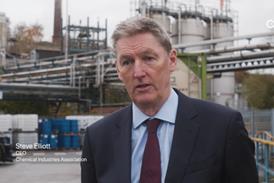The Chemical Industries Association (CIA) outlines key recommendations for the structuring of a new funding scheme for industrial decarbonisation, that would maximise impact and ensure the UK’s industrial heartlands can transition to a low-carbon future.
Download full position statement
The Government’s modern industrial strategy, Invest 2035, is the perfect opportunity to re-evaluate the Government’s approach to industrial decarbonisation. A realistic and holistic approach is required to ensure a change in direction towards decarbonisation and away from deindustrialisation. A key pillar of this should be a new industrial decarbonisation funding scheme, announced as part of the 2025 Spending Review, to help foster growth, stability, and innovation in key sectors like chemicals.
The chemical industry is one of the most energy- intensive sectors, and is currently reliant on fossil fuels for both energy and feedstock, making it a significant source of greenhouse gas emissions. But these emissions can be mitigated. The sector will always need energy to drive chemical reactions but, with the right investment conditions, the sector could source heat from clean electricity and hydrogen, and feedstock from circular sources like biomass, unrecyclable waste, and captured carbon.
Because of our position at the root of the supply chain, decarbonising the chemical industry can have a ripple effect, reducing emissions across all sectors and enhancing the overall sustainability of industrial value chains. Moreover, our sector is pivotal in developing and supplying the materials necessary for low-carbon technologies - like batteries, wind turbines, CCS, solar panels and heat pumps - that we will all rely on to reach net zero. Innovation in the chemical sector supports decarbonisation throughout the economy.
Our key recommendations are:
- Target energy intensive sectors exposed to carbon leakage.
- Increase funding availability.
- Extend funding into the future.
- Focus on high TRL energy efficiency and decarbonisation technologies.
- Ensure internationally competitive grant ratios.
- Provide continuous access to support.
- Extend the spending period.
- Award projects based on cost/carbon savings.
- Simplify the application process.
- A single route to funding.
By implementing the CIA’s recommendations, the UK can create a robust funding framework that effectively supports industrial decarbonisation, positions the UK as a leader in the global transition, and ultimately drives the growth of a modern, low-carbon economy.

Read our full position statement to undrstand our key recommendations for the structuring of a new funding scheme for industrial decarbonisation, that would maximise impact and ensure the UK’s industrial heartlands can transition to a low-carbon future.
DOWNLOADPDF | 349 Kb























